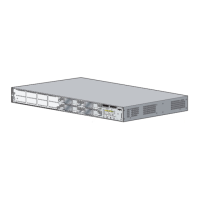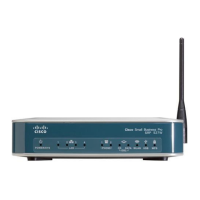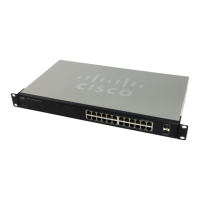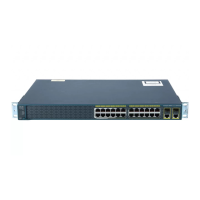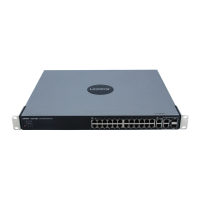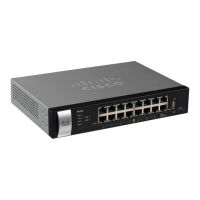175
Chapter 10: Configuring Spanning Tree
Defining Multiple Spanning Tree
SGE2000/SGE2000P Gigabit Ethernet Switch Reference Guide
Chapter
10
– Rapid STP — Indicates that Rapid STP is enabled on the device.
– Multiple STP — Indicates that Multiple STP is enabled on the device.
• Type — Indicates if the port is a point-to-point port, or a port connected to a hub. The possible field
values are:
– Boundary Port — Indicates the port is a boundary port. A Boundary port attaches MST
bridges to LAN in an outlying region. If the port is a boundary port, it also indicates whether
the device on the other side of the link is working in RSTP or STP mode
– Master Port — Indicates the port is a master port. A Master port provides connectivity from
a MSTP region to the outlying CIST root.
– Internal — Indicates the port is an internal port.
• Port Priority — Defines the interface priority for specified instance. The default value is 128.
• Path Cost — Indicates the port contribution to the Spanning Tree instance. The range should always
be 1-200,000,000.
• Port State— Indicates whether the port is enabled for the specific instance. The possible field values
are:
– Enable — Enables the port for the specific instance.
– Disable — Disables the port for the specific instance.
– Forwarding — Enables forwarding all multicast packets on a port.
• Designated Cost — Indicates that the default path cost is assigned according to the method selected
on the Spanning Tree Global Settings page.
• Designated Bridge ID — Indicates that the bridge ID number that connects the link or shared LAN
to the root.
• Designated Port ID — Indicates that the Port ID number on the designated bridge that connects the
link or the shared LAN to the root.
• Remaining Hops — Indicates the hops remaining to the next destination.
– Static — Attaches the port to the Multicast group as static member in the Static Row. The
port/LAG has joined the Multicast group statically in the Current Row.
– Forbidden — Forbidden ports are not included the Multicast group, even if IGMP snooping
designated the port to join a Multicast group.
– Non — The port is not part of a Multicast group.
